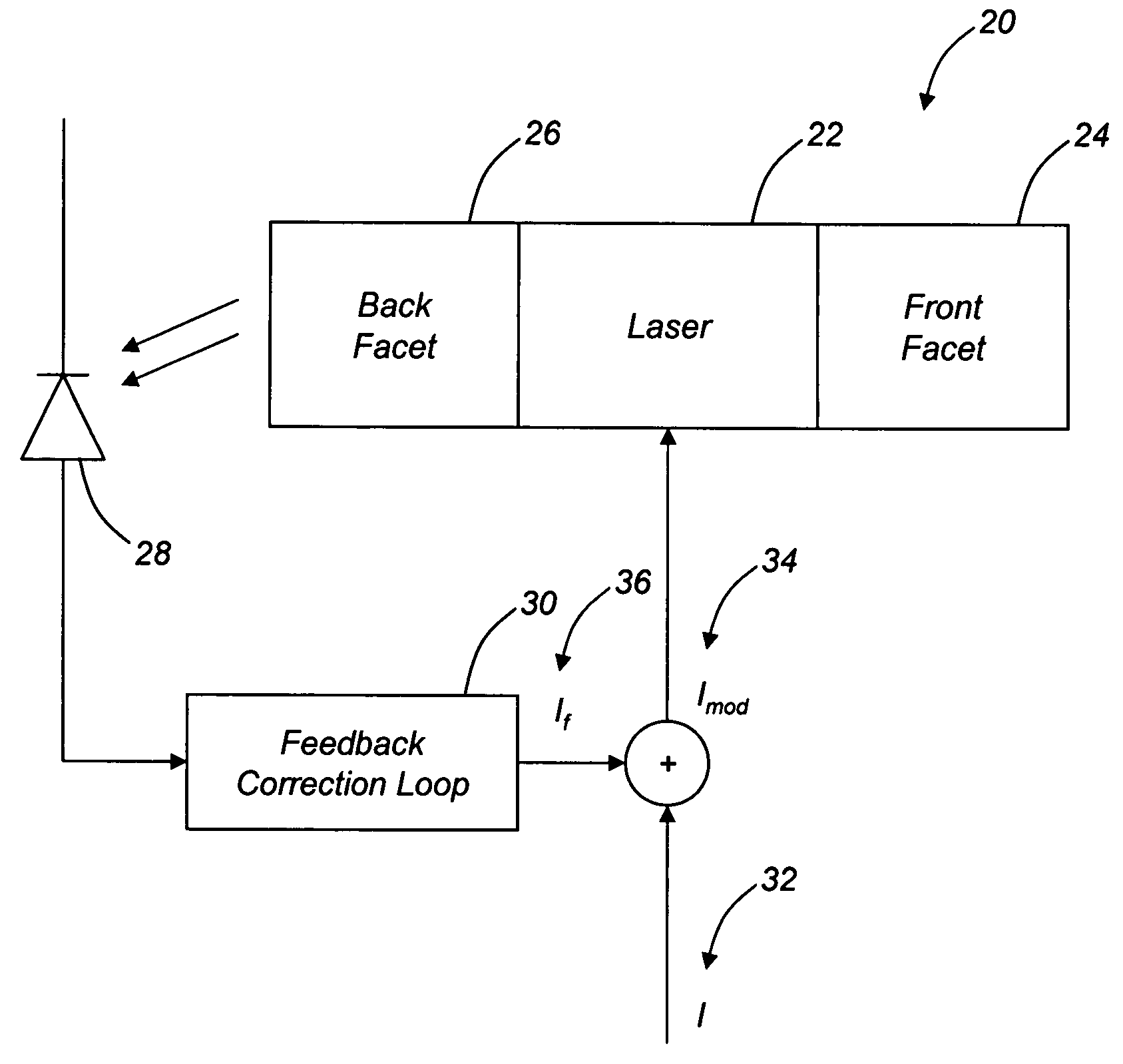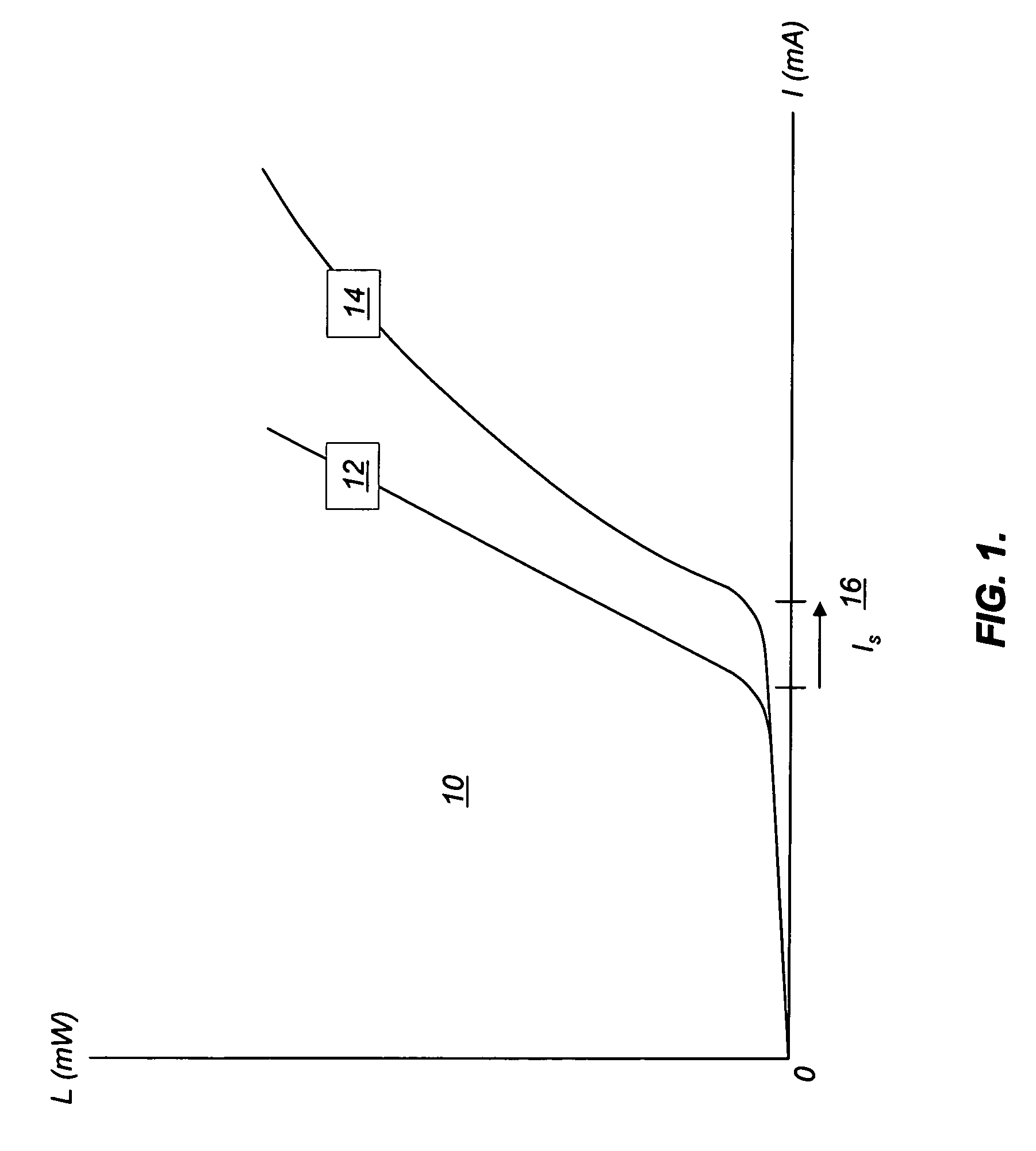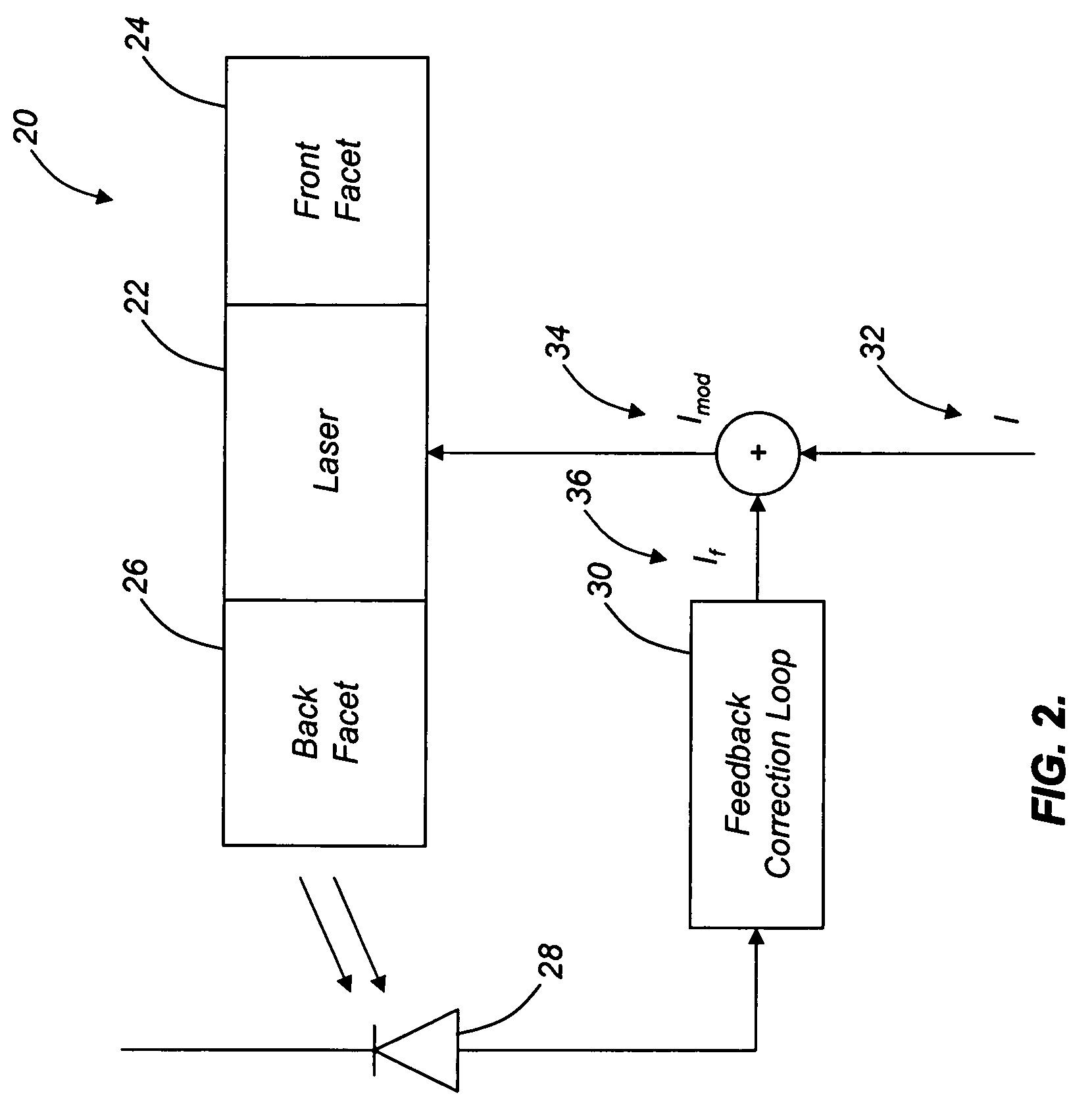Systems and methods for real-time compensation for non-linearity in optical sources for analog signal transmission
a technology of analog signal transmission and real-time compensation, applied in the field of analog optical source and transmission, can solve the problems of module laser replacement, performance degradation, and become an expensive proposition, and achieve the effect of gaining the feedback loop
- Summary
- Abstract
- Description
- Claims
- Application Information
AI Technical Summary
Benefits of technology
Problems solved by technology
Method used
Image
Examples
Embodiment Construction
[0014]As described above, analog optical signals can be generated using highly-linear directly modulated lasers, such as semiconductor lasers, laser diodes, and the like. In general, the characteristic curves 10 (FIG. 1) (optical power in mW vs. injection current in mA) (LI curves) of these lasers must be substantially linear and curve or “kink”-free above a threshold current 16 (FIG. 1) (Is) at which lasing begins. Referring to FIG. 1, for example, a substantially linear characteristic curve 12 and a substantially non-linear characteristic curve 14 above Is 16 are illustrated. Alternatively, analog optical signals can be generated using externally modulated lasers to compensate, to some extent, for any non-linearity. The overall requirement, using either modulation scheme, is that the generated analog optical signals closely match the input analog electrical signals, without significant distortion. In other words, slope variation compensation must be incorporated in order to mainta...
PUM
 Login to View More
Login to View More Abstract
Description
Claims
Application Information
 Login to View More
Login to View More - R&D
- Intellectual Property
- Life Sciences
- Materials
- Tech Scout
- Unparalleled Data Quality
- Higher Quality Content
- 60% Fewer Hallucinations
Browse by: Latest US Patents, China's latest patents, Technical Efficacy Thesaurus, Application Domain, Technology Topic, Popular Technical Reports.
© 2025 PatSnap. All rights reserved.Legal|Privacy policy|Modern Slavery Act Transparency Statement|Sitemap|About US| Contact US: help@patsnap.com



